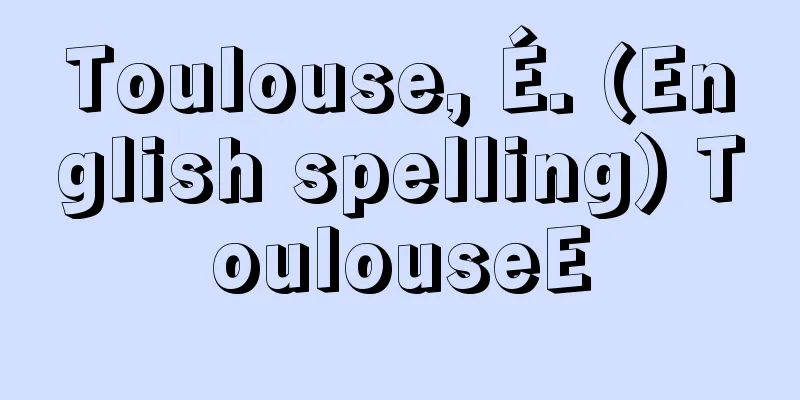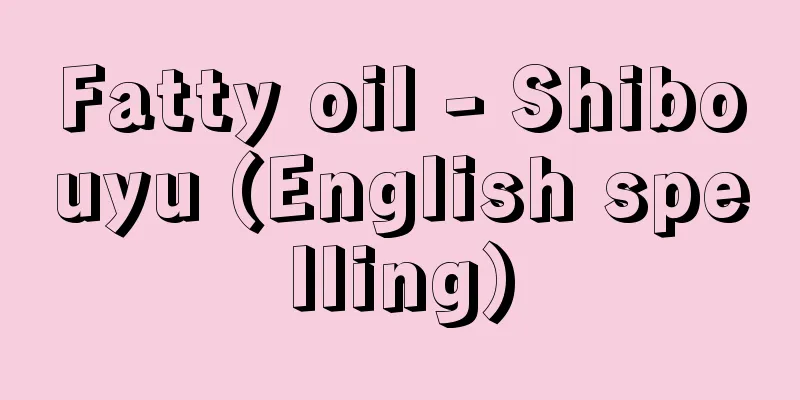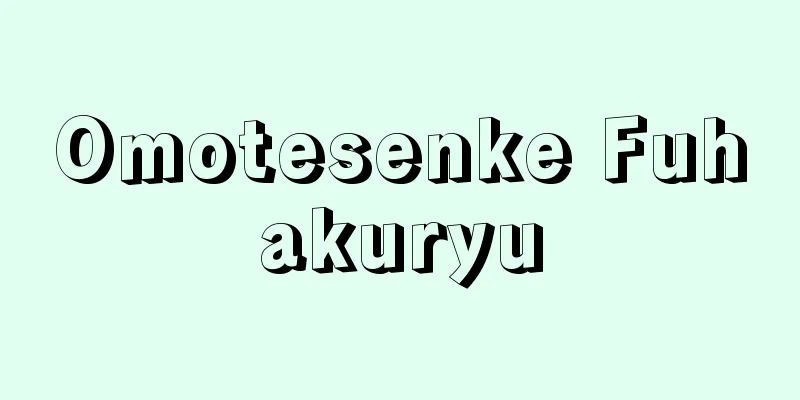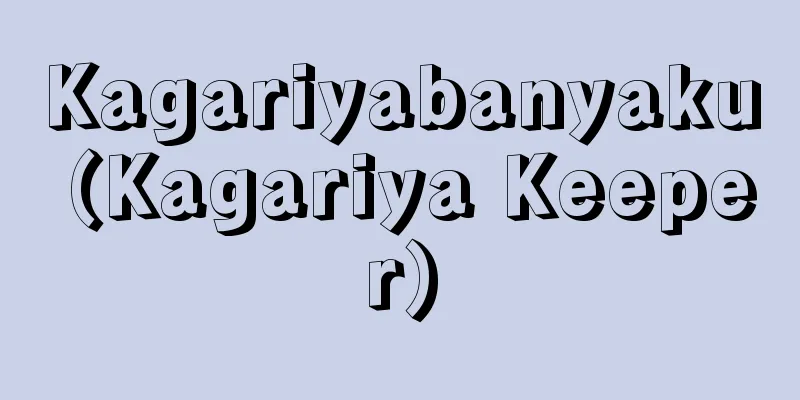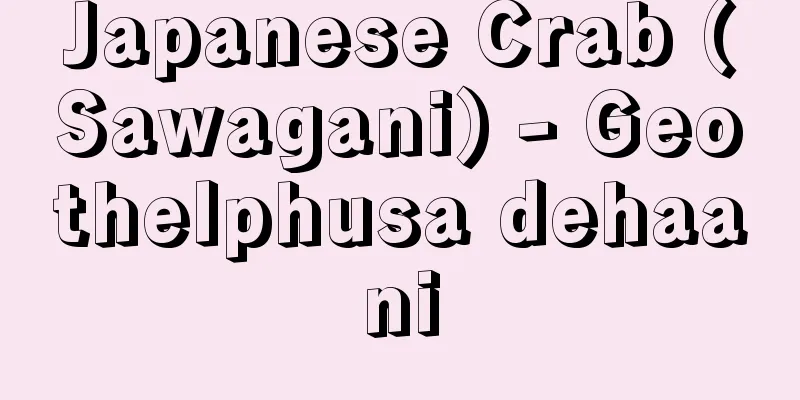Kyogen mask

|
A mask used in Kyogen. Kyogen is often defined as a play without masks, but masks are used for special roles, and there are about 20 different types of masks. A black mask is worn for the Suzu-no-dan part of "Sanbaso," and a Noborihige mask is used for the god of a subordinate shrine in Ai Kyogen. Both are deified old faces that include a smile. A Tobi kite is used for the Konoha Tengu in Ai Kyogen. A little less than 30% of Hon Kyogen plays require masks, and these masks can be broadly categorized according to the role they are used for: (1) humans and ghosts, (2) gods, Buddhas, and demons, and (3) animals, plants, and spirits. (1) includes the grandfather mask worn by particularly elderly people, the ama and fukure masks worn by old nuns, and the oto mask (otogoze mask) worn by unattractive young women. For ghosts appearing in dance-kyogen, the hanahiki mask, which is an old man's mask, was used in the old days, but from the early Edo period, masks were gradually invented for the same characters, such as Tsuen, Yuzen, and Nushi, and these are often used today. When dressing up as Buddhist statues, the use of the oto mask as a prop is a typical adaptation of the kyogen style. (2) includes the masks of common gods, such as Ebisu, Daikoku, Bishamon, and the god of fortune, as well as the Buaku masks for demons and Enma, and the Kaminari masks for thunder. (3) Examples of this type include kentoku (see virtue), which is used to refer to the spirits of dogs, horses, cows, or crabs; usofuki (sofuki), which is used to refer to the spirits of insects, plants, fish, or mosquitoes; and realistic-looking monkeys and raccoon dogs. Usofuki can also be used in a more fuzzy way, such as to represent the face of a scarecrow. Among the above, the Otsu, Nun, Buaku and Saru masks have masks with quite different styles. Many are based on Noh or Bugaku masks, but Kyogen masks have a strong human touch and a common feature of being gentle and humorous. However, Hakuzosu (Shirozosu), who portrays the monk who has taken the form of a fox for the first shite in "Tsurigitsune" and the fox for the second shite, are considered to be excellent masks that exude a sense of awe. [Kobayashi, Responsible] "Nomura Manzo's 'Kyogen Masks - Costumes and Props' (1956, Wanya Shoten)" ▽ "Aoki Shinji's 'Praise of Kyogen Masks' (1981, Haga Shoten)" [Reference] |Source: Shogakukan Encyclopedia Nipponica About Encyclopedia Nipponica Information | Legend |
|
狂言で使用する面(おもて)。狂言は往々素面劇と規定されるが、特殊な役には仮面を用い、類型面は約20種ある。『三番叟(さんばそう)』の鈴ノ段には黒式(こくしき)の面をつけ、間(あい)狂言では末社(まっしゃ)の神(しん)に用いる登髭(のぼりひげ)を代表面とする。ともに笑みを含む老人の顔を神格化したものである。なお間狂言の木の葉天狗(てんぐ)には鳶(とび)を使う。本狂言で面を必要とするのは全曲の30%弱であり、これらの仮面は使用する役柄によって、(1)人間・亡霊、(2)神仏・鬼、(3)動植物・精霊に大別できる。 (1)には、とくに高齢の老人がつける祖父(おおじ)、老尼用の尼(あま)・ふくれ、不器量な娘が用いる乙(おと)(乙御前(おとごぜ))などのほか、舞狂言に登場する亡霊には、古くは老人面である鼻引(はなひき)を流用したが、江戸前期からしだいに通円(つうえん)・祐善(ゆうぜん)・塗師(ぬし)など同名の役柄に専用する面が創案され、現在ではそれらを使用することが多い。なお、仏像に扮装(ふんそう)するとき、乙を小道具として使っているのは狂言らしい転用である。(2)には、夷(えびす)・大黒(だいこく)・毘沙門(びしゃもん)・福の神など庶民的な神の面と、鬼や閻魔(えんま)用の武悪(ぶあく)、雷用の神鳴(かみなり)がある。(3)としては、犬・馬・牛あるいは蟹(かに)の精などにつける賢徳(けんとく)(見徳)、昆虫・植物・魚類または蚊(か)の精などに用いるウソフキ(嘯吹)のほか、写実的な猿・狸(たぬき)などがあげられるが、ウソフキには案山子(かかし)の顔とするとぼけた用例もみいだせる。 以上のうち乙・尼・武悪・猿などにはかなり作法の異なる面がある。能面や舞楽面を原型とするものが多いが、狂言面は人間味が濃く、またなごやかでユーモラスなのが共通点である。もっとも『釣狐(つりぎつね)』の前シテ用の狐の化けた僧を写した伯蔵主(はくぞうす)(白蔵主)および後シテ用の狐などはすごみを感じさせる面を良作とする。 [小林 責] 『野村万蔵著『狂言面――附装束と小道具』(1956・わんや書店)』▽『青木信二撮影『狂言面礼讃』(1981・芳賀書店)』 [参照項目] |出典 小学館 日本大百科全書(ニッポニカ)日本大百科全書(ニッポニカ)について 情報 | 凡例 |
Recommend
American Samoa - American Samoa
The Samoa Islands in the South Pacific Ocean, eas...
Toggenburg
...Due to these characteristics, they are often k...
Shonai Plain - Shonai Heiya
An alluvial plain in northwest Yamagata Prefectur...
Capelin
A fish of the family Osmeridae. Also known as Cape...
Handwriting analysis
Handwriting analysis refers to the identification...
Galuppi, B. - Galuppi
…Scarlatti left behind 600 harpsichord sonatas, w...
"The Golden Age" (music)
...The dance polkas by J. Strauss and his son are...
Anglo-Saxon trade unions
...However, if we were to categorize them very ro...
Ebola Liberalitas Julia - Ebola Liberalitas Julia
…A typical walled city built on a hill about 300 ...
Uryu River
It is the first tributary of the Ishikari River s...
Kakeri (Sho) - Kakeri
A term in Japanese music. (1) In Noh, it is a rela...
Daphnia biwaensis (English spelling) Daphniabiwaensis
…The dinoflagellate Ceratium hirundinella is dist...
khshathrapavan (English spelling)
…the title of a governor of a province in the Per...
F Center - EF Center
…This refers to the case where a crystal that was...
Ata Heishiro - Ata Heishiro
…Taira Iesada, the envoy to pursue the Taira clan...

